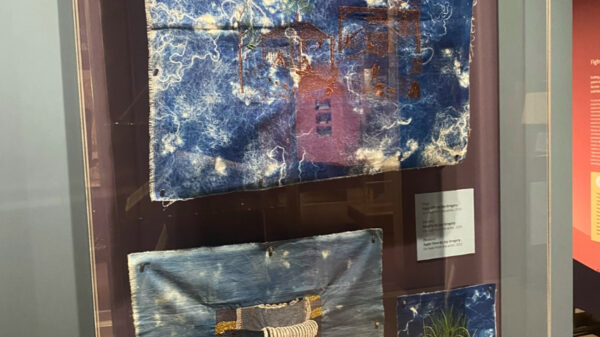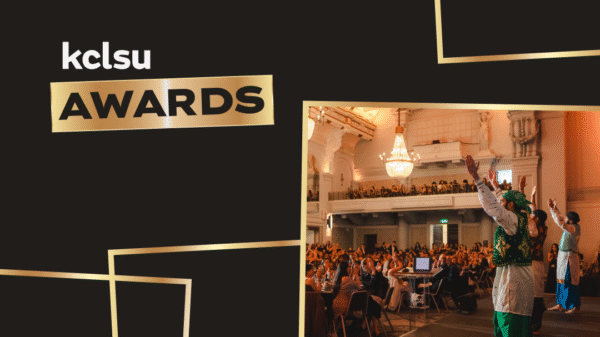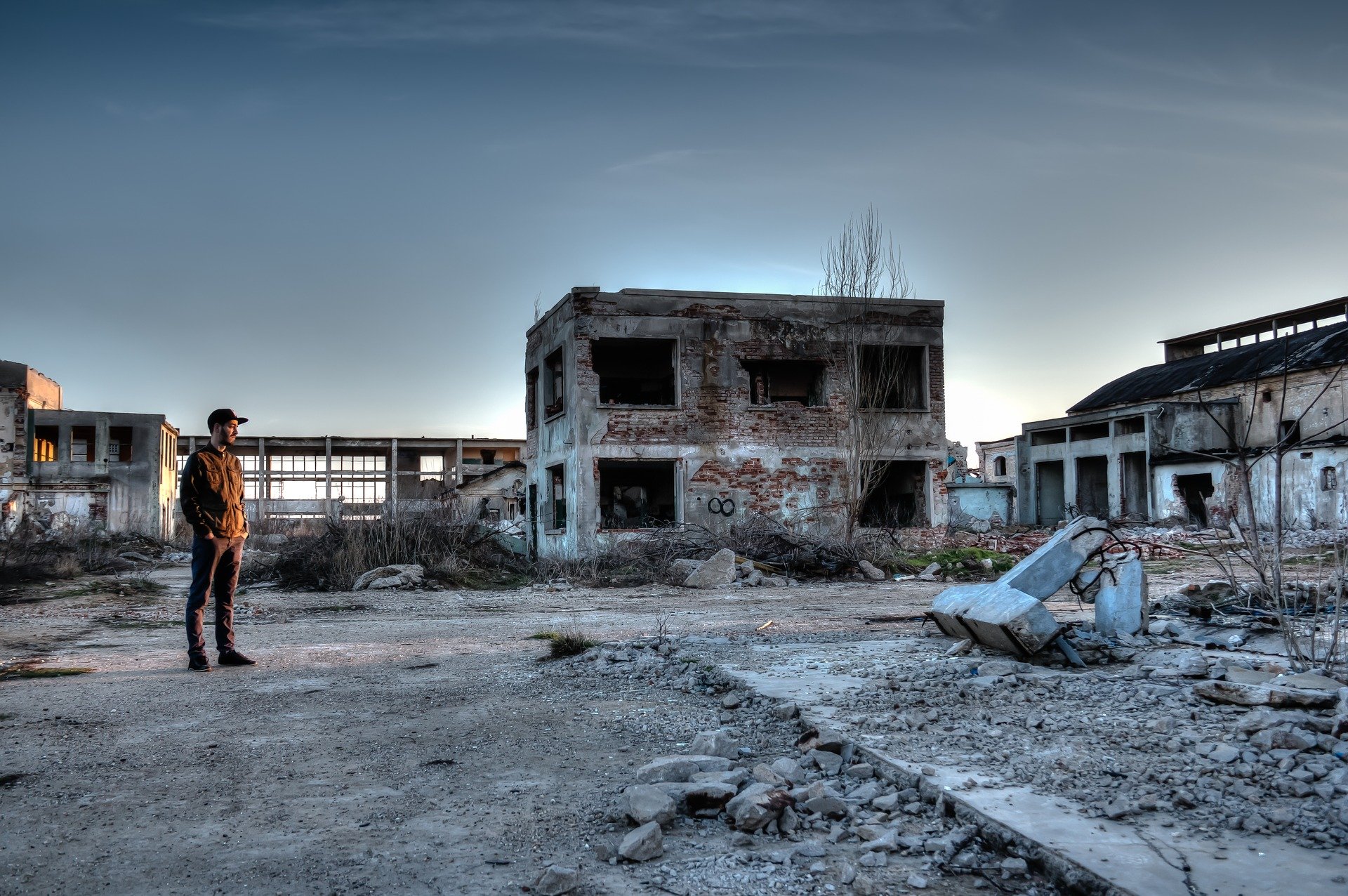Guest writer Ved Shivakumar implores readers to stop overlooking the genocide in Ethiopia’s Tigray region and reminds us of the continued dire humanitarian crisis that gripes the country.
Trigger Warning: This section contains graphic descriptions of violence and human rights abuses.
The stark reality of human cruelty is often revealed in the most unimaginable ways. According to a harrowing report in The Guardian, shocking videos shared by soldiers on social media have brought to light the horrific killings that followed. The footage captures the chilling moment when soldiers rounded up a group of terrified men, herding them to a rocky clifftop before cruelly forcing them to the edge. With no mercy, they were executed in cold blood with automatic rifles. As their lifeless bodies were discarded into the ravine below, the relentless sound of gunfire continued, silencing any hope that someone might survive.
In one gut-wrenching scene, a soldier, eerily smiling with a rifle casually slung over his shoulder, turns to the camera, callously encouraging the filmer to get closer. “Get a better shot,” he says, as though the human lives before him are nothing more than a sick spectacle; “You should capture how they die.” The horror deepens with another video, where a soldier, identifying himself and his unit, hands his phone to a comrade, who proceeds to film him executing a man at point-blank range. These atrocities, cold and deliberate, leave an indelible scar on the heart of humanity.
This is one of the many atrocities which have happened in Tigray. Located in the northernmost part of Ethiopia, home to the Tigrayan, Irob, and Kunama people. Between 2020 and 2022, while the United Nations has not officially recognised it, substantial evidence from multiple non-state actors indicates that a genocide took place. Estimates suggest that tens to hundreds of thousands of civilians were killed.
The full scale of injuries remains unknown, but at least hundreds of thousands of women were subjected to sexual violence according to Amnesty International. More than six million Tigrayan people have been affected in various ways by the conflict, with these acts committed by the Ethiopian and Eritrean governments along with other militias.
Brief overview of the causes of the conflict
After the Ethiopian Civil War ended in 1991, Ethiopia transitioned into a dominant-party system under the Ethiopian People’s Revolutionary Democratic Front (EPRDF), a coalition of four ethnically based parties. For nearly three decades, the Tigray People’s Liberation Front (TPLF) was the most influential faction within the EPRDF, exerting significant control over the federal government.
However, political dynamics began to shift in 2018 when Abiy Ahmed, a leader from the Oromo Peoples’ Democratic Organisation (OPDO), rose to power as Prime Minister of Ethiopia. One of Abiy’s most significant early actions was initiating peace talks with Eritrea, Ethiopia’s long-standing adversary, to formally end a border dispute that had lasted for two decades.
Although this was celebrated by many, the people in the Tigray Region, particularly within the TPLF, saw it as a betrayal of those who had fought and died in the 1998–2000 Eritrean-Ethiopian War. The TPLF strongly criticised the peace agreement, arguing that it was rushed, contained serious flaws, and was made without proper consultation with key stakeholders, particularly TPLF leaders who had played a central role in Ethiopian politics.
A further turning point came on 1 December 2019, when Abiy Ahmed dissolved the EPRDF coalition and merged its constituent parties, along with several opposition groups, into a new political entity called the Prosperity Party. The TPLF refused to join this new party, viewing the move as an attempt to sideline them and erase their influence. As a result, the TPLF leadership withdrew to the Tigray Region, where they continued to govern independently, frequently clashing with Abiy’s federal government.
By 2020, tensions between the TPLF and the Ethiopian government were escalating rapidly. In March, the National Election Board of Ethiopia postponed the country’s general elections — originally scheduled for August — due to the COVID-19 pandemic. This delay meant that the terms of federal and regional lawmakers, as well as the executive branch, were extended beyond the October 2020 constitutional deadline, a decision that sparked controversy.
The TPLF, led by chairman Debretsion Gebremichael, rejected the election postponement as he labelled it unconstitutional. In open defiance of the federal government, the TPLF proceeded with its own regional election in Tigray on 9 September 2020.
The Ethiopian government refused to recognise the results and sought to prevent journalists from covering the vote. In retaliation for what it deemed an illegal election, the federal government cut funding to the Tigray Region, a move the TPLF denounced as an act of war. The Ethiopian constitution, specifically Article 39.1, grants “every Nation, Nationality, and People in Ethiopia an unconditional right to self-determination, including the right to secession.”
However, Article 62.9 also gives the House of Federation the authority to “order Federal intervention if any State [government], in violation of the Constitution, endangers the constitutional order.” These constitutional provisions became central to the deepening crisis.
On the night of 3 November 2020, hostilities erupted into full-scale conflict. Tigray Special Forces and allied militia launched an attack on multiple Ethiopian National Defense Force (ENDF) positions. The assault resulted in several deaths and marked the formal beginning of the Tigray War. The TPLF justified the attack as self-defence, while the Ethiopian government saw it as an open rebellion. This incident triggered a military response from Addis Ababa, plunging Ethiopia into a devastating civil war with far-reaching humanitarian consequences for millions of people.
Massacres and crimes against humanity during the Tigray genocide
Despite overwhelming evidence, both the Ethiopian and Eritrean governments continue to deny responsibility. Eritrean troops, accused of some of the worst massacres — including the killing of hundreds in Axum, a town in Northern Ethiopia — have faced no accountability. Eritrea’s president, Isaias Afwerki, dismisses allegations of war crimes as “a fantasy,” while Ethiopia’s government has provided little transparency in its so-called investigations. The transitional justice process, critics argue, is yet another exercise in evasion.
The war’s brutality extended beyond direct violence. The Ethiopian government’s blockade of aid to Tigray led to famine-like conditions, with starvation weaponised as a tool of war. Large reports suggest tens of thousands perished not from bullets, but from disease and hunger. An estimated 120,000 women were subjected to sexual violence, with reports indicating rape was systematically used to terrorise communities.
The quest for justice remains elusive. Survivors, like those in Axum, continue to grieve in silence, their voices muffled by political denial and international inertia. “They have just forgotten about us,” laments one survivor, as her daughter wipes away her tears according to The Guardian. Others, like Leake Embaye, who helped bury the dead, question whether justice will ever come. “The government lied,” he says, standing in his looted barber shop, holding a poster of the fallen.
Four years on, the scars of Tigray remain raw. While preliminary research suggests nearly half of civilian casualties died due to lack of medical care, the true cost of the war extends far beyond numbers. Without accountability, the cycle of impunity in Ethiopia’s conflict-ridden history risks repeating itself at the expense of those who have already lost everything.
A fragile peace: Tigray’s ongoing struggles in the aftermath of war
There was relief in Tigray when the devastating two-year war ended with a peace agreement signed in Pretoria, South Africa, on November 2022. However, despite the formal cessation of hostilities, the region remains in crisis. Hundreds of thousands of internally displaced people (IDPs) continue to live in dire conditions, aid remains inconsistent, and conflict persists in neighbouring regions. Ethiopia’s fragile peace is now under threat from renewed violence, political instability, and a deepening humanitarian catastrophe.
Although the transitional government, alongside a justice and reconciliation court have been established, violence continues to grip Ethiopia. The conflict in the Amhara region, which erupted in mid-2023, remains the country’s most pressing security crisis. According to the Ethiopian Human Rights Commission (EHRC), at least 115 civilians were killed between September and December 2024 in clashes between Ethiopian forces and Amhara’s Fano militia. This is only a partial estimate, as access to conflict zones remains difficult.
While the federal government claims to be addressing instability, the persistence of armed militias, territorial disputes, and an absence of meaningful reconciliation, efforts indicate that Ethiopia’s security remains precarious. The situation is exacerbated by the continued presence of Eritrean forces in border areas and the lack of a comprehensive disarmament strategy for Tigrayan forces, raising fears of future escalation. As Gebreselassie Kahsay, a lecturer at Mekele University in Tigray’s capital, stated:
Gebreselassie Kahsay
A humanitarian catastrophe beyond security concerns
Ethiopia is grappling with a worsening humanitarian disaster. The displacement crisis in Tigray remains severe, with nearly one million people unable to return home. Western Tigray remains under the control of militias, while Eritrean forces maintain their grip on strategic border zones, preventing safe resettlement. Reports indicate that living conditions in IDP camps are appalling, with food shortages, inadequate medical care, and a lack of basic infrastructure. Many displaced families have spent over two years in makeshift shelters, and at least 600 displaced people from the town of Badme alone have died due to starvation and inadequate support.
Food insecurity is reaching alarming levels. The World Food Programme (WFP) estimates that 15.8 million Ethiopians need food assistance, with 2.1 million in Tigray at immediate risk of starvation. The collapse of agricultural production due to war, prolonged droughts, and economic hardship has only deepened the crisis. According to satellite imagery and humanitarian reports, entire communities are on the brink of famine, echoing the horrors of Ethiopia’s 1984 famine, in which nearly a million people perished. The desperation is evident in the words of Ngisti (pseudonym), a 36-year-old farmer who fled her home, who spoke to the Lowenstein International Human Rights Clinic:
Ngisti (pseudonym)
The role of the international community: apathy and strategic interests
The response of the international community has been marked by strategic disengagement and selective intervention. While Ethiopia has positioned its reconciliation process under the “African solutions to African problems framework,” it has refused to cooperate with UN-led investigations into war crimes.
The European Union (EU), which had previously suspended €600 million in aid over concerns of human rights abuses, quietly restored funding in 2023, seemingly shelving demands for accountability. This diplomatic leniency reflects Ethiopia’s strategic importance.
As a key player in African geopolitics, Ethiopia’s stability is crucial for European and Western partners. However, critics argue that this prioritisation of stability over justice allows for impunity to persist. Ethiopian authorities have limited the role of international experts in accountability mechanisms to advisory capacities rather than meaningful judicial participation, leading many to view the process as a superficial attempt at compliance.
The scars of war in Tigray run deep. Beyond the political and humanitarian crises, the psychological toll on the population is immense. Reports detail widespread trauma, particularly among survivors of sexual violence and war crimes. Infrastructure, including hospitals, schools, and water systems, remains in ruins, with estimates placing reconstruction costs at $20 billion.
However, money alone cannot heal the wounds of war. Reconciliation, justice, and political stability remain elusive. According to the Human Rights Watch, the emotional toll of the war is evident in the words of Tirhas S (pseudonym), a 44-year-old sexual violence survivor:
Meanwhile, tensions within the TPLF further complicate the region’s political landscape. Infighting between factions led by Gebremichael and Getachew Reda, the Chairman of the interim administration of the Tigray region, has weakened the TPLF’s leadership, slowing the reintegration of the group into national politics. This division threatens Tigray’s interim administration, which is tasked with managing the fragile post-war transition.
The uncertain future of Ethiopia
Despite the promise of peace, Ethiopia remains deeply fragile. The continued violence in Amhara, the humanitarian crisis in Tigray, and the lack of meaningful international engagement suggest that the country’s stability is far from assured.
Without a concerted effort to address displacement, hold perpetrators of war crimes accountable, and foster genuine reconciliation, Ethiopia risks descending into further turmoil. For the people of Tigray, the war may have ended on paper, but the struggle for survival continues.
The international community, regional actors, and Ethiopia’s own government must decide whether to pursue a path of genuine justice and recovery or allow the cycle of violence and suffering to persist. Time is running out for those like Asmelash Mariam, a 28-year-old war survivor who lost his leg in the conflict and now navigates life with a prosthetic limb, a stark reminder of the war’s lasting impact.
What can you do to help?
As a reader learning about the ongoing crisis in Tigray and Ethiopia, you may feel compelled to take action. Here are some ways you can help:
Stay informed: Continue to educate yourself about the situation in Ethiopia by following reputable news sources and humanitarian organisations working in the region.
Raise awareness: Share information about the crisis with your peers, on social media, or in your academic community. The world’s silence is deafening. We need more people to speak up about what is happening there.
Support humanitarian organisations: Consider donating to reputable NGOs providing aid in Ethiopia. Organisations like the Red Cross, Médecins Sans Frontières, and UNICEF are actively working in the region.
Advocate for action: Write to your local representatives or international bodies urging them to take diplomatic action or increase humanitarian support for Ethiopia.
Participate in or organise fundraising events: Host charity runs, bake sales, or other events to raise funds and awareness for the cause.
Engage in academic research: If you’re a student, consider focusing your research projects or papers on the Ethiopian crisis to contribute to the body of knowledge on the subject.
Support refugee initiatives: Look for local organisations supporting Ethiopian refugees in your area and volunteer your time or resources.
Promote peace and reconciliation: Engage in discussions that promote understanding and peaceful resolution of conflicts, both locally and globally.
To the reader: always remember that Every voice matters in the pursuit of peace. Even small actions can contribute to a larger movement for change.
















